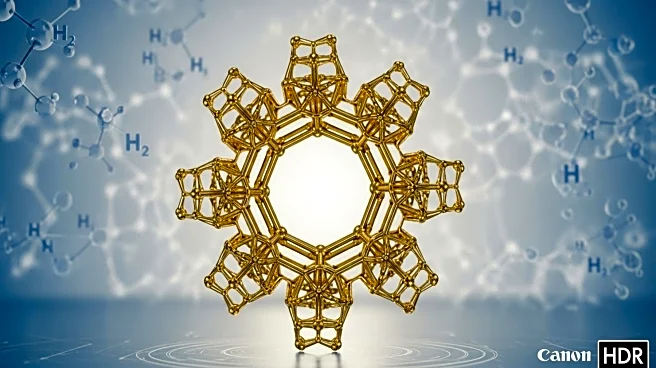What's Happening?
Recent research has explored the properties of alkaline earth metal-based perovskites, specifically focusing on their ferroelectric characteristics. These perovskites, which adopt an ABX3-type 3D structure, are composed of elements such as Ba2+ or Sr2+ and organic cations like pyrrolidinium. The study highlights the ferroelectricity of (pyrrolidinium)Ba(ClO4)3, which exhibits polarization switching. A fluorination strategy, involving the substitution of pyrrolidinium with R- or S-3-fluoropyrrolidinium, enhances the material's Curie temperature and polarization values without altering its crystal structure.
Why It's Important?
The discovery of enhanced ferroelectric properties in these perovskites could have significant implications for the development of advanced electronic materials. Ferroelectric materials are crucial in various applications, including memory devices, sensors, and actuators. The ability to optimize these properties through chemical modification opens new avenues for material science research and potential industrial applications. This advancement could lead to more efficient and versatile electronic components, impacting sectors such as consumer electronics, telecommunications, and renewable energy.
What's Next?
Further research is likely to focus on the practical applications of these findings, exploring how these optimized perovskites can be integrated into existing technologies. Collaboration between material scientists and industry stakeholders could accelerate the development of new products that leverage these enhanced properties. Additionally, ongoing studies may investigate other chemical modifications to further improve the performance and applicability of ferroelectric materials.











